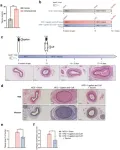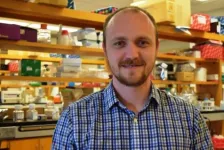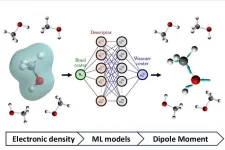(Press-News.org) Climate change-related extreme weather, such as massive flooding and prolonged drought, often result in dangerous outbreaks of diarrheal diseases particularly in less developed countries, where diarrheal diseases is the third leading cause of death among young children. Now a study out Oct. 22, 2024, in Environmental Research Letters by an international team of investigators led by senior author from University of Maryland’s School of Public Health (UMD SPH) Amir Sapkota, offers a way to predict the risk of such deadly outbreaks using AI modeling, giving public health systems weeks or even months to prepare and to save lives.
“Increases in extreme weather events related to climate change will only continue in the foreseeable future. We must adapt as a society,” said Sapkota, who is chair of the SPH Department of Epidemiology and Biostatistics. “The early warning systems outlined in this research are a step in that direction to enhance community resilience to the health threats posed by climate change.”
The multidisciplinary team, working across several institutions, relied on temperature, precipitation, previous disease rates, El Niño climate patterns as well as other geographic and environmental factors in three countries - Nepal, Taiwan, and Vietnam - between 2000 and 2019. Using this data, the researchers trained AI-based models that can predict area-level disease burden with weeks to months ahead of time.
“Knowing expected disease burden weeks to months ahead of time provides public health practitioners crucial time to prepare. This way they are better prepared to respond, when the time comes” Sapkota said.
While the study focused on Nepal, Vietnam, and Taiwan, “our findings are quite applicable to other parts of the world as well, particularly areas where communities lack access to municipal drinking water and functioning sanitation systems,” said lead author of the study Raul Curz-Cano, Associate Professor at Indiana University School of Public Health in Bloomington.
Sapkota says AI’s ability to work with huge data sets means that this study is an early step among many he anticipates will result in increasingly accurate predictive models for early warning systems. He hopes this will allow public health systems to prepare communities to protect themselves from a heightened risk of diarrheal outbreaks.
The team responsible for the research came from a wide variety of fields, including atmospheric and oceanic science, community health research, water resources engineering and beyond. The research team was comprised of authors from UMD – including its Department of Epidemiology and Biostatistics and Department of Atmospheric and Oceanic Science – and from Indiana University School of Public Health in Bloomington, the Nepal Health Research Council, the Hue University of Medicine and Pharmacy in Vietnam, Lund University in Sweden, and Chung Yuan Christian University in Taiwan.
This work was supported by grants from the National Science Foundation through Belmont Forum (award number (FAIN): 2025470) and by Swedish Research Council for Health, Working Life and Welfare (Forte: 2019-01552); Taiwan Ministry of Science and Technology (MOST 109-2621-M-033-001-MY3 and MOST 110- 2625-M-033-002); and National Science Foundation National Research Traineeship Program (NRT-INFEWS:1828910).
To request an interview with Dr. Sapkota, please reach out to sph-comm@umd.edu.
END
UMD researcher trains AI to predict diarrheal outbreaks related to climate change
New study uses AI models to create early warning system for disease outbreaks resulting from climate change-related extreme weather
2024-10-25
ELSE PRESS RELEASES FROM THIS DATE:
Researchers discover that errors in protein location are a common cause of disease
2024-10-25
The team developed a high-throughput imaging platform to assess the influence of nearly 3,500 mutations on protein location. They found that roughly one in six disease-causing mutations led to proteins ending up in the wrong location in the cell.
“Technological advances in genetic sequencing have allowed researchers to identify thousands of protein mutations that cause disease,” said Jessica Lacoste, co-lead author on the study and postdoctoral fellow at U of T’s Donnelly Centre for Cellular and Biomolecular Research. “We are now able to ...
Aston University researcher develops new optical technique that could revolutionise medical diagnostics
2024-10-25
New light technique could revolutionise non-invasive medical diagnostics
Orbital Angular Momentum could be harnessed to improve imaging and data transmission through biological tissues
Could eventually have potential to make procedures such as surgery or biopsies unnecessary.
An Aston University researcher has developed a new technique using light which could revolutionise non-invasive medical diagnostics and optical communication.
The research showcases how a type of light called the Orbital Angular Momentum (OAM) can be harnessed to improve imaging and data transmission through skin and other biological tissues.
A ...
Taurine reduces atherosclerotic plaque area and stability in mice
2024-10-25
Background and objectives
Previous studies suggest that taurine supplementation may attenuate atherosclerosis by reducing lipid levels. However, energy drinks containing taurine have been shown to increase blood pressure, a key risk factor for atherosclerosis. Thus, the role of taurine in atherosclerosis remains controversial. This study aimed to investigate the effect of taurine on the development of atherosclerotic plaques.
Methods
Plasma taurine levels were measured in 105 patients with varying degrees of coronary heart disease and in 40 healthy individuals using 1,2-13C2-taurine-based ultra-performance ...
Immune cell discovery offers new potential for cancer immunotherapy
2024-10-25
Atlanta, GA — Oct. 23, 2024 — Researchers at Winship Cancer Institute of Emory University have identified a novel type of immune cell, called the stem-like CD4 T cell, that plays a pivotal role in anti-tumor immunity. The pre-clinical findings, published in Nature, highlight the potential to activate these cells to fight tumors more effectively, offering new hope for broader treatment success, particularly in patients with cancer that is unresponsive to current immunotherapies.
Led by Haydn ...
“Well-man” thrown from castle identified from 800-year-old Norse saga
2024-10-25
A passage in the Norse Sverris Saga, the 800-year-old story of King Sverre Sigurdsson, describes a military raid that occurred in AD 1197, during which a body was thrown into a well at Sverresborg Castle, outside Trondheim in central Norway, likely as an attempt to poison the main water source for the local inhabitants. A new study published in the Cell Press journal iScience on October 25 describes how researchers used ancient DNA to corroborate the events of the saga and discover details about the “Well-man,” blending history and archaeology ...
Social media and suicide risk in youth
2024-10-25
About The Study: This overview identifies research gaps and methodological challenges that need to be addressed to guide intervention strategies and future policy relevant to youth and suicide risk.
Corresponding Author: To contact the corresponding author, Lisa H. Jaycox, PhD, email lisa.jaycox@nimh.gov.
To access the embargoed study: Visit our For The Media website at this link https://media.jamanetwork.com/
(doi:10.1001/jamanetworkopen.2024.41499)
Editor’s Note: Please see ...
Hospitalization for COVID-19, other respiratory infections, and postacute patient-reported symptoms
2024-10-25
About The Study: This cohort study found that postacute infection syndrome is not unique to COVID-19; it can also occur in people with other severe lower respiratory tract infections (LRTIs). However, compared with other LRTIs, COVID-19 appeared to impose an extra burden of neurological, cognitive, and fatigue symptoms. These findings highlight the similarities and differences between post–COVID-19 condition and postacute infection syndrome triggered by other pathogens, which will inform tailored clinical management and offer mechanistic insights into these previously overlooked syndromes.
Corresponding Author: To contact the corresponding author, Junqing Xie, ...
Metabolic bariatric surgery in the era of GLP-1 receptor agonists for obesity management
2024-10-25
About The Study: This cross-sectional study of privately insured patients found a more than 2-fold increase in use of glucagon-like peptide-1 receptor agonists (GLP-1 RAs) as anti-obesity medications from 2022 to 2023, with a 25.6% decrease in the rate of metabolic bariatric surgery during the same period. Our results provide a national contemporaneous estimate of the decline in metabolic bariatric surgery associated with the era of GLP-1 RAs.
Corresponding Author: To contact the corresponding author, Thomas C. Tsai, ...
‘The way to a man’s heart disease’: Can social expectations of masculinity be bad for cardiovascular health?
2024-10-25
Cardiovascular disease remains a top cause of sickness and death in the U.S. and worldwide. Doctors and researchers have it especially high on their radar because it’s more modifiable and preventable than many other diseases and causes of death.
Importantly, though, modification and prevention rely on early detection and mitigation of risk factors like hypertension and high cholesterol. Unfortunately, detection and mitigation are suboptimal throughout the U.S. population: Experts estimate that up to 75% of young adults who have risk factors such as hypertension and high cholesterol are unaware ...
New machine learning model quickly and accurately predicts dielectric function
2024-10-25
Researchers Tomohito Amano and Shinji Tsuneyuki of the University of Tokyo with Tamio Yamazaki of CURIE (JSR-UTokyo Collaboration Hub) have developed a new machine learning model to predict the dielectric function of materials, rather than calculating from first-principles. The dielectric function measures the polarization of negative and positive charges within materials, the phenomenon underlying dielectric materials. Thus, the fast and accurate prediction of dielectric function facilitates the development of novel dielectric materials, an ingredient of many cutting-edge technologies such as 6G ...
LAST 30 PRESS RELEASES:
Why nail-biting, procrastination and other self-sabotaging behaviors are rooted in survival instincts
Regional variations in mechanical properties of porcine leptomeninges
Artificial empathy in therapy and healthcare: advancements in interpersonal interaction technologies
Why some brains switch gears more efficiently than others
UVA’s Jundong Li wins ICDM’S 2025 Tao Li Award for data mining, machine learning
UVA’s low-power, high-performance computer power player Mircea Stan earns National Academy of Inventors fellowship
Not playing by the rules: USU researcher explores filamentous algae dynamics in rivers
Do our body clocks influence our risk of dementia?
Anthropologists offer new evidence of bipedalism in long-debated fossil discovery
Safer receipt paper from wood
Dosage-sensitive genes suggest no whole-genome duplications in ancestral angiosperm
First ancient human herpesvirus genomes document their deep history with humans
Why Some Bacteria Survive Antibiotics and How to Stop Them - New study reveals that bacteria can survive antibiotic treatment through two fundamentally different “shutdown modes”
UCLA study links scar healing to dangerous placenta condition
CHANGE-seq-BE finds off-target changes in the genome from base editors
The Journal of Nuclear Medicine Ahead-of-Print Tip Sheet: January 2, 2026
Delayed or absent first dose of measles, mumps, and rubella vaccination
Trends in US preterm birth rates by household income and race and ethnicity
Study identifies potential biomarker linked to progression and brain inflammation in multiple sclerosis
Many mothers in Norway do not show up for postnatal check-ups
Researchers want to find out why quick clay is so unstable
Superradiant spins show teamwork at the quantum scale
Cleveland Clinic Research links tumor bacteria to immunotherapy resistance in head and neck cancer
First Editorial of 2026: Resisting AI slop
Joint ground- and space-based observations reveal Saturn-mass rogue planet
Inheritable genetic variant offers protection against blood cancer risk and progression
Pigs settled Pacific islands alongside early human voyagers
A Coral reef’s daily pulse reshapes microbes in surrounding waters
EAST Tokamak experiments exceed plasma density limit, offering new approach to fusion ignition
Groundbreaking discovery reveals Africa’s oldest cremation pyre and complex ritual practices
[Press-News.org] UMD researcher trains AI to predict diarrheal outbreaks related to climate changeNew study uses AI models to create early warning system for disease outbreaks resulting from climate change-related extreme weather





